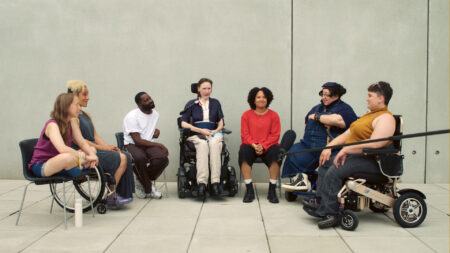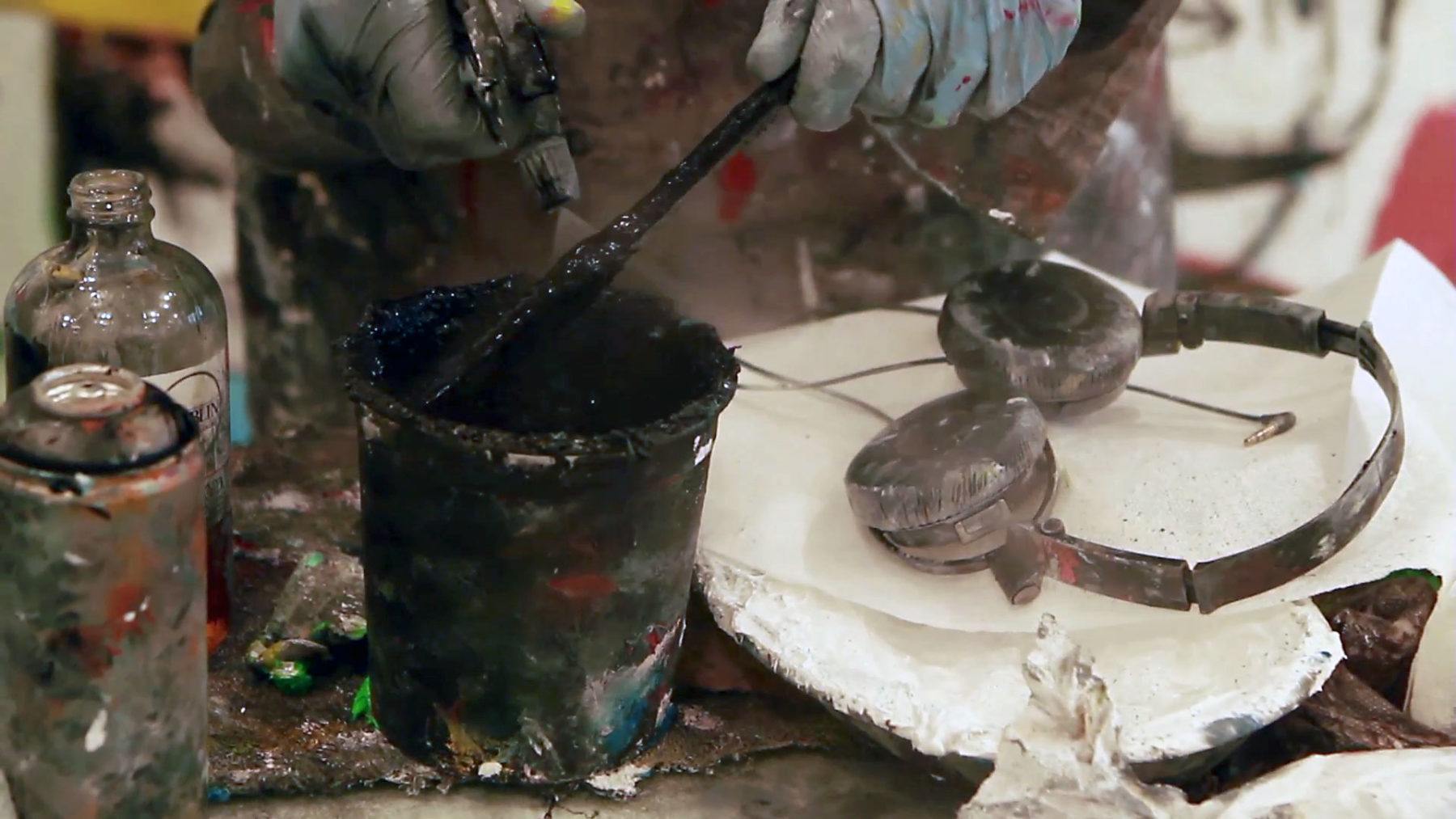
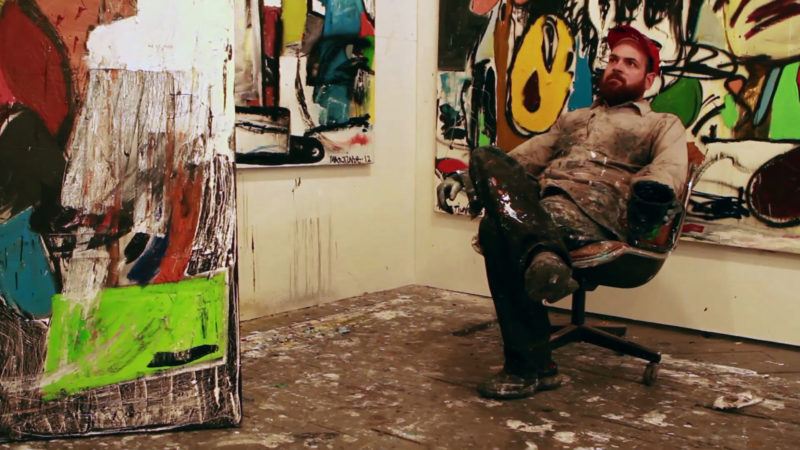
In the Studio
Graffiti taught Eddie Martinez the values of painting fast.


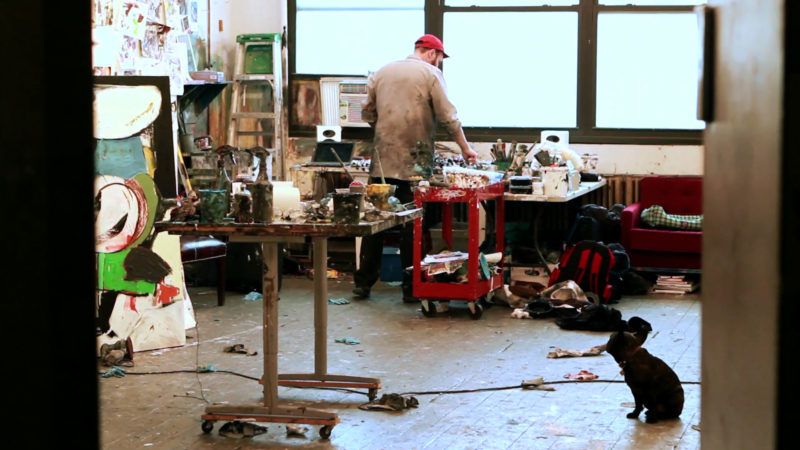
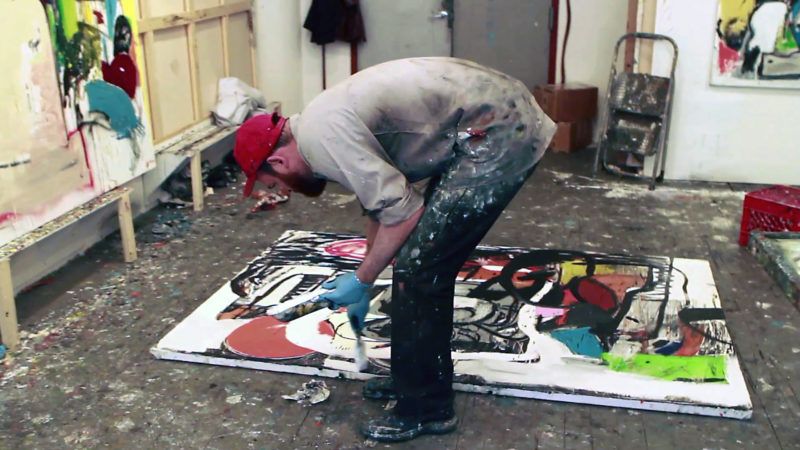
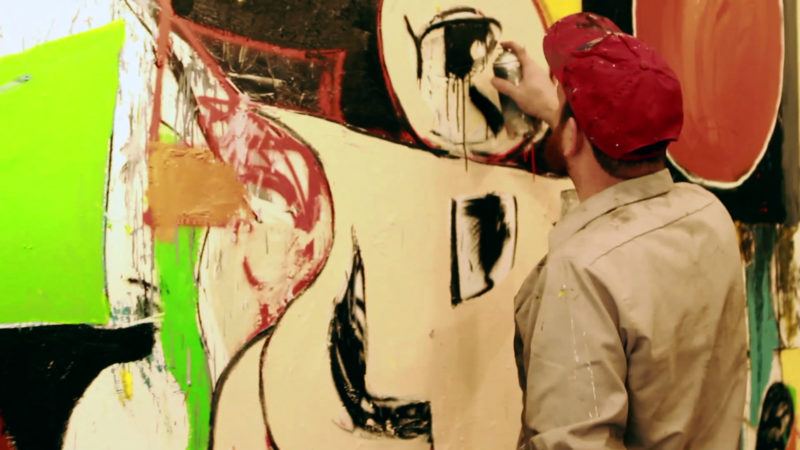
Art21 Does your work have a narrative?
Eddie Martinez I don’t try and tell any kind of story. Everyone says there’s narrative there, but I just leave that up to the viewer to create their own. It’s just a very personal thing for me. Of course I’m saying things, but I feel like it’s more successful for me to say it with the paint. I don’t want to over-explain anything or put ideas in people’s heads with words. If I start painting I’m going to start making mistakes, which is fine, because I thrive on mistakes.
I have been noticing that the more confidence I have, the less frantic marks are involved. That’s exciting for me, because my goal has been how to make large paintings have the feel of small drawings. For awhile I was trying to achieve that by literally drawing all over the canvas with all kinds of tools and making marks and stuff like that, which worked for a while. Then I switched to using oil paint, which helped get rid of all the little marks and lay these things down in a bigger way as opposed to all this little sh*t. Not doing the still lifes anymore has helped me a lot.
What’s your background in street art?
I began paying attention to graffiti again after moving to San Diego in the ninth grade. It was mostly character-based, copying comics like Calvin and Hobbes, The Simpsons and Punisher and Wolverine and things like that. I really did, and still do have, a real love of graffiti lettering, but I was more drawn towards the character side of things and felt more comfortable doing that.
When I was most active I did a lot of pieces, but just like anything else in my life, I wasn’t good enough at it to really make it. Like skateboarding, I was never going to get sponsored—which is the best part about skateboarding. I did a fair amount of everything in graffiti—street bombing and piecing—but when the thing you’re drawn to happens to have risk, then you ask yourself if you need it. Like skateboarding has a massive amount of risk. I was never good enough or had big enough balls enough to sacrifice my body, because people break their neck. It’s gnarly what people do for skateboarding.
How does graffiti influence your visual aesthetic?
I love graffiti, I think it’s amazing, but there’s a lot of rules, politics and hierarchy involved. It just didn’t work for me after a certain point. And that’s all I have to say about that. [LAUGHS] I will say that I learned a massive amount from graffiti that I’ve taken into the studio. In terms of scale and how to make large marks and how to take something that’s a small drawing and make it large. Speed and repetition in the valley of repetition. I mean that’s an invaluable skill set that given when you do graffiti. Speed too.
What do you want viewers to take away from one of your works?
When I’m in the middle of making a picture, the best thing and the most freeing feeling is when I’m just moving the brush and making those strokes. Or, if I’m just sitting there making a drawing with a Sharpie, it’s when I’m completely just autodidactically making it.
An ideal experience would be for someone looking at it and forming their own complete opinion and own experience, because it’s about the making and the process. When the making’s done I’d rather not look at it anymore.
